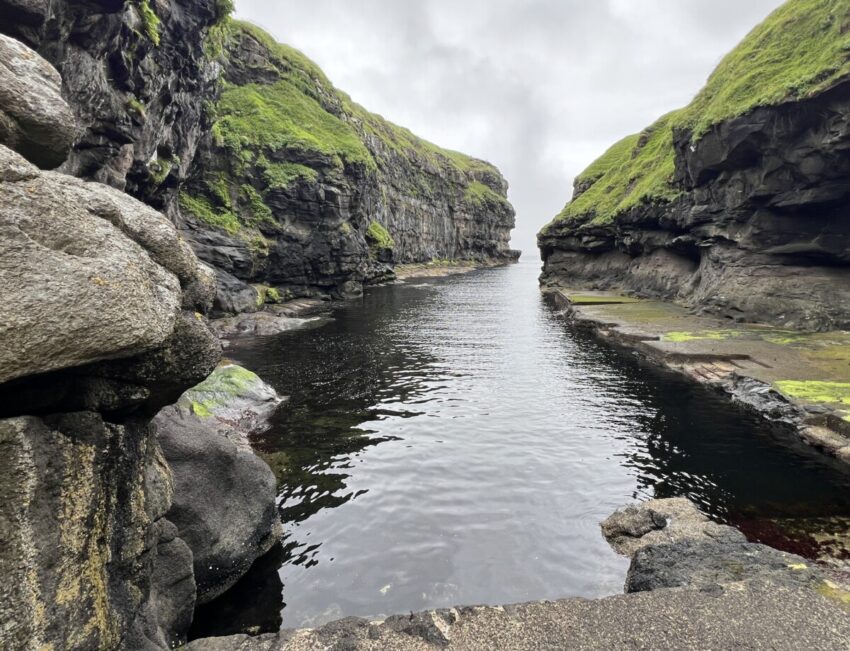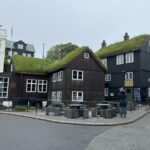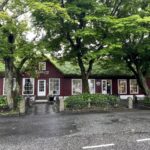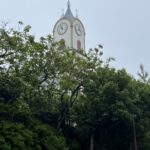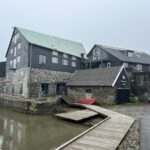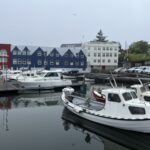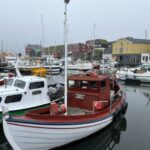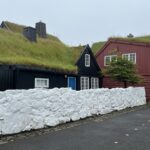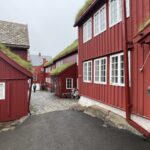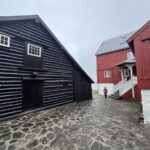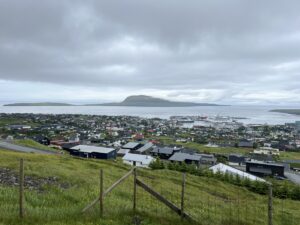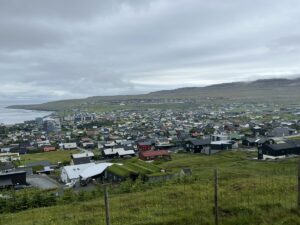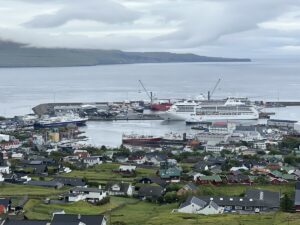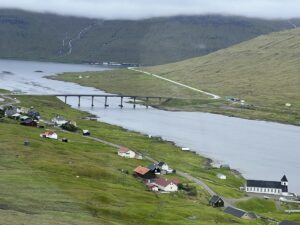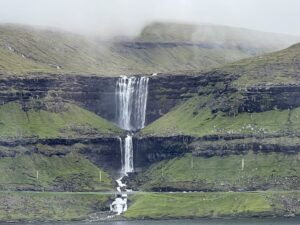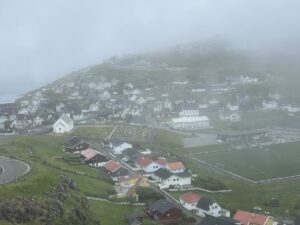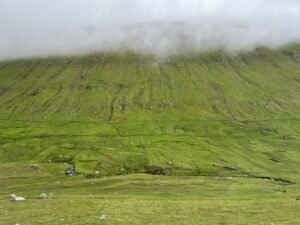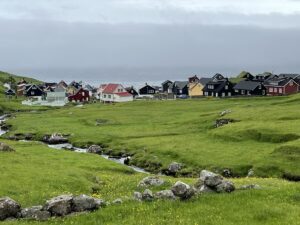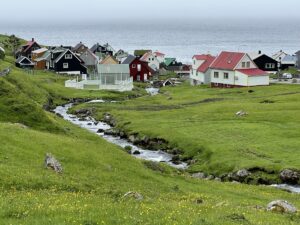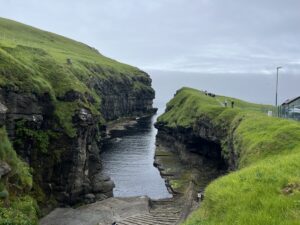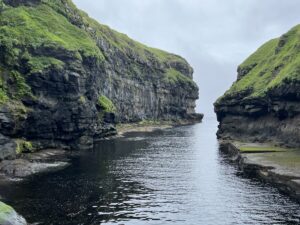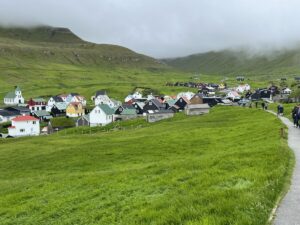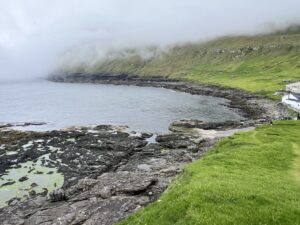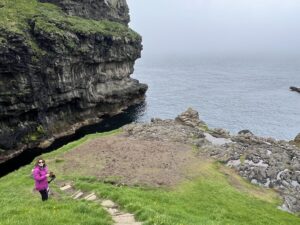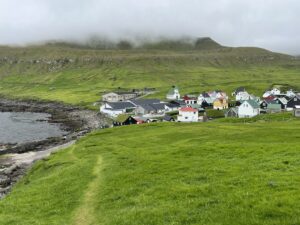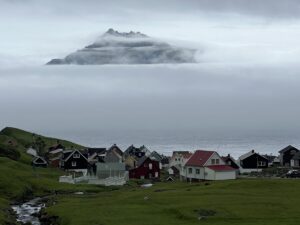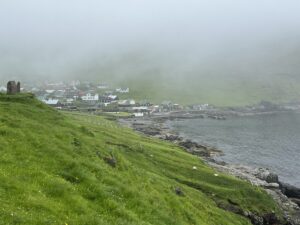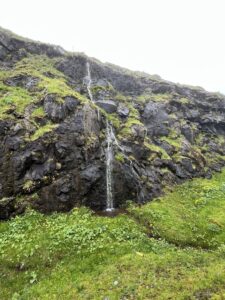So on to the Faroe Islands. Located in the Northeast Atlantic, the Faroe Islands comprise 18 small islands, characterised by steep cliffs, tall mountains, narrow fjords – and a population of 55,000. The Faroe Islands is a self-governing archipelago, part of the Kingdom of Denmark. While the Faroese have fantastic language skills, most speak English as a third language (the second is usually Danish).
We arrived at the charming capital city of Torshavn, a picturesque haven nestled amidst the North Atlantic Ocean. Located on the island of Streymoy, Torshavn is a blend of natural beauty, rich cultural heritage and a warm sense of community. Despite its small size, Torshavn is the heart of Faroese culture and politics. The city’s name translates to “Thor’s Harbour”, a reference to the Norse god of thunder. Its history dates back over a thousand years, with evidence of Norse settlements and Viking heritage visible in its architecture and traditions. Tórshavn’s historic charm is evident in its colourful houses, traditional turf-roofed buildings, and cobbled streeets.
The city’s Old Town, Tinganes, is a maze of narrow alleys and historic houses that have stood the test of time. The district also houses the Faroese Parliament and government offices, reflecting the city’s contemporary importance.
After a quick walk around Torshavn, we went on a tour that took in the Faroes natural beauty. We went on a scenic journey to the mountains , villages and waterways north of Torshavn.
We travelled northwards to where a bridge crosses the narrow Sundini channel to connect Streymoy island to the smaller , more northerly island of Eysturoy. We travelled through the tiny village of Eioi (700 people) and crossed the pristine mountain terrain to even tinier Gjogv (50 people). We arrived at the beautiful Gjogv Gorge, a 617 foot steeply rock-walled gorge that runs from the village to the ocean. Filled with seawater, it offers natural harbour for fishing boats.
As it was a very misty day with low cloud cover we could only see the peak of the 2,893-foot Slaettaratindur, the highest peak in the Faroes, while the cloud shrouded the lower part of the mountain. The clouds did lift as we drove away.
Stunning scenery and a fabulous day on these beautiful islands.

